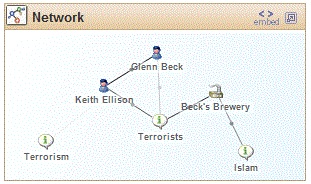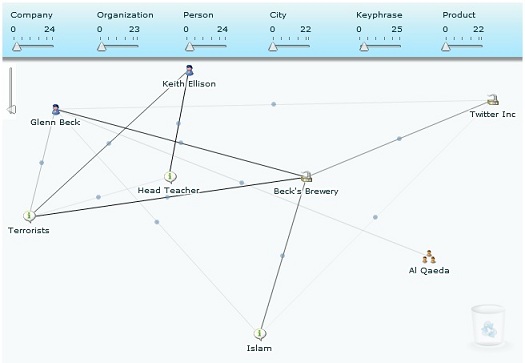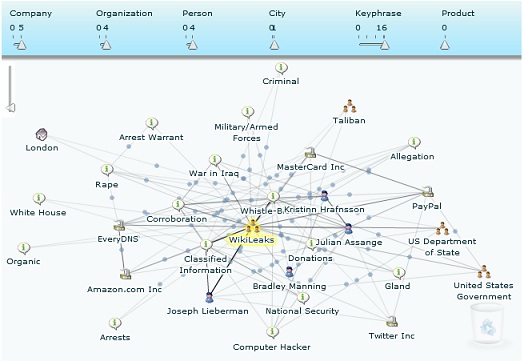Consider the Gap to be closed…
Core: I got my job because I have a remarkable talent for reading a teleprompter.
Gap: That’s interesting. I got my job because I have a remarkable talent for killing Tibetans.
Surprises can always happen…

Some Chicago Boyz know each other from student days at the University of Chicago. Others are Chicago boys in spirit. The blog name is also intended as a good-humored gesture of admiration for distinguished Chicago School economists and fellow travelers.
Consider the Gap to be closed…

Core: I got my job because I have a remarkable talent for reading a teleprompter.
Gap: That’s interesting. I got my job because I have a remarkable talent for killing Tibetans.
Surprises can always happen…

The thirst for a magic bullet is profoundly American. In war, the magic bullet manifests itself in the antiseptic wonder weapons that promise to transform conflict into a harmless, contact-free sporting event. In politics, the magic bullet manifests itself as something like a 2,000+ page health care reform law. In finance, it manifests itself as the AAA rated senior tranche in a collateralized debt obligation (CDO).
In diplomacy, the manifestation of magic bulletry is the “grand bargain”. Every diplomat’s secret desire is making the agreement to end all agreements and conducting the negotiation to end all negotiations. As a magic bullet, the grand bargain would kill all diplomatic disputes for all time, Unfortunately, over every aspiring 1648 or 1815 hangs the long shadow of 1919. Versailles was intended to be the magic bullet to end all magic bullets. Instead, it became the magic bullet that wasn’t. Inasmuch as it possessed magic, it was the magic to ricochet off its intended target and right back at its originators.
In today’s West, dominated by those high on the heady drug of global meliorism, the mere act of talking has somehow become an end unto itself. Whether it’s a “peace process”, “six-party talks”, “quartet”, “agreed framework”, “security council resolution”, or some other high-falutin’ hogwash, Western diplomacy resembles is more the decrepit liturgy of a dying baroque cult than the hard-nosed power brokering beloved by naïve realists. Like a general who puts the desperate lunge for a tactically decisive battle above stodgy strategic logic, a diplomat who puts talking, negotiating, and agreements first puts the tactical cart before the strategic horse.
Strategy seeks to convert power into control to achieve purpose. The ideal was outlined by Alexander Hamilton in Federalist 31:
[ cross-posted from Zenpundit ]
We’ve been having an intriguing discussion recently in the comments on Zenpundit about mapping / modeling complex situations in a way that leaves us humans more liable to come to nuanced understandings and less liable to unintended consequences, and one point that keeps on cropping up is the need to pare down the number of nodes in our mapping without losing sight of the subtleties…
I was thus delighted to find, as I was doing my morning trawl of usual and unusual news sources, that Glenn Beck had come out with his estimate of how many Muslim terrorists there are in the world (10% of the global Muslim population, ie 157 million), Fareed Zakaria had refuted him — and there was even a helpful Silobreaker network diagram to show me how the relevant nodes under discussion fit together:

I was delighted to see that (Mormon) Glenn Beck is more closely associated with (Muslim) Rep. Keith Ellison than he is with terrorists, and sorry to note that Beck’s Brewery and Islam are somehow linked… But naturally, once I had seen this much I wanted to drill down even deeper — so I entered the appropriate keywords at Silobreaker and found this:

You’ll see that Beck’s link with Al Qaeda is, thankfully, a weak one. And I think you’ll agree with me that even shifting from a six node to an eight node graph considerably ups the sophistication of analysis required to fully comprehend the issues portrayed.
*
In any case, I thought it might be appropriate to post Silobuster’s more detailed map of the current situation with WikiLeaks here:

All becomes clear, eh?
I particularly like the node labeled “Gland” (it’s almost hidden but not quite, you’ll find it lower right, between PayPal and Twitter)– that might be the one I’d zero in on to get a fuller appreciation of the complexities of the situation.
And for the record, this post is an example of British “humor” — or as we prefer to call it, “dry wit”.
[Officer] Chalifoux said, “When I asked him to recite the alphabet from A to Z, he said, ‘I can’t do that.’ When I asked him why, he stated, ‘No one could do that. From A to Z? Come on. That’s crazy.’ ” From the Boston Herald
I follow sports more than most people, but less than some. One of the most fascinating areas of sport for me is how quickly professional athletes can burn through their fortunes – and end up completely broke after their careers are over.
With most professional athletes, a five year career is all they get. Imagine yourself after you graduated high school or college and knowing up front that your best earning years are coming up. Wouldn’t you be putting something away for the future rather then spending that dough on assets that are devalued the second you buy them, such as bouncy cars and jewelry?